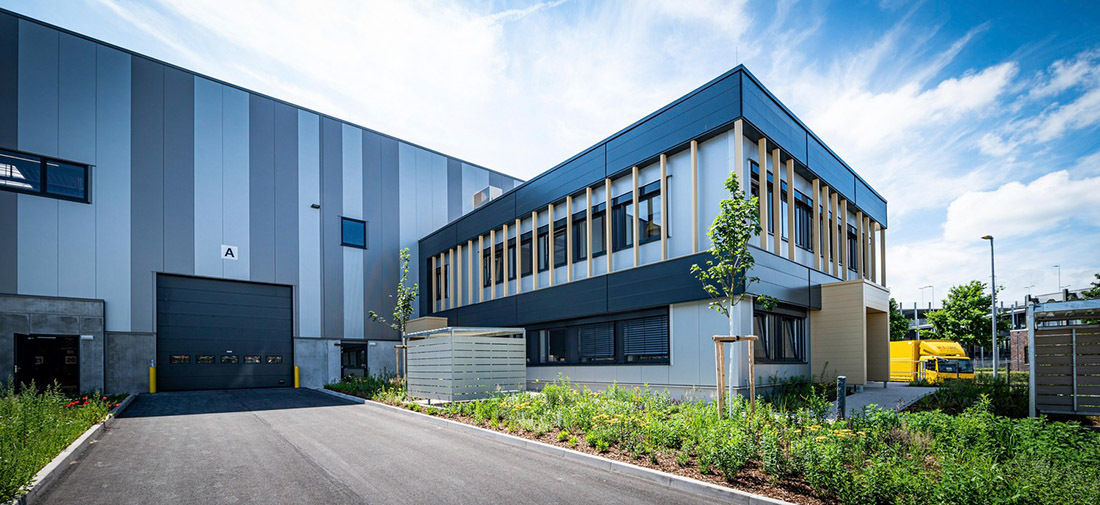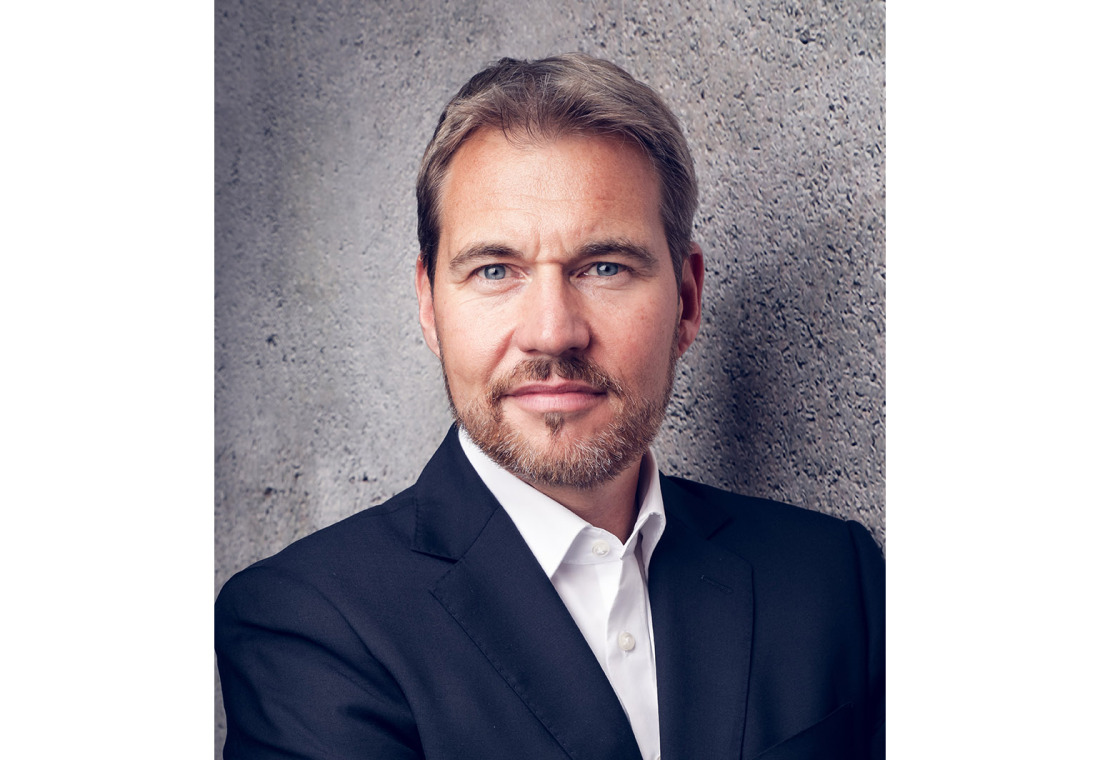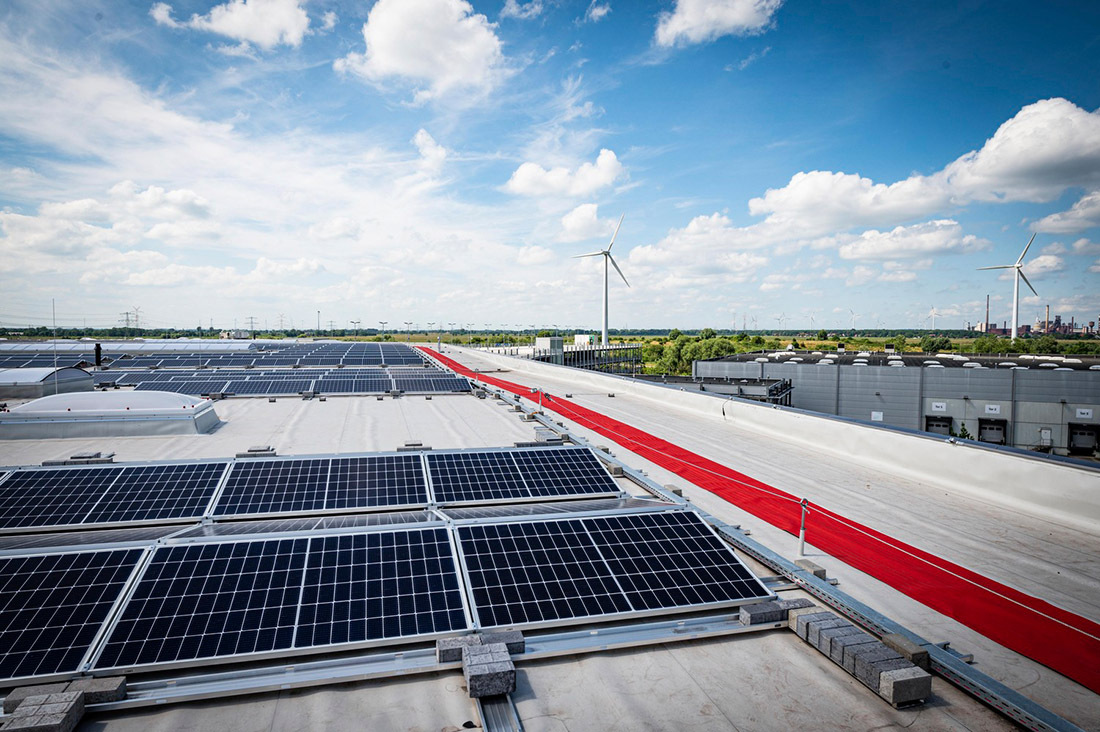"For us to be sustainable tomorrow, we need to build sustainably today!"
Investing in BremenGoodman, the property developers, are taking a green approach to logistics facilities and commercial properties

Urban, sustainable and multi-storey – is that what the urban logistics facility of the future look like? We are talking to Markus Meyer, Head of Northern Germany for Goodman, the australian property developers.
Mr. Meyer, how important is sustainability at Goodman?
Meyer: We can say, in general, that sustainability is extremely important at Goodman. We are an Australian company. In our home country, we're living through the progressive changes in the climate and experiencing ever-increasing heat waves that are well beyond average and their effects. Our corporate philosophy has also developed from this awareness of climate changes. We met the objective we had set ourselves, to be carbon-neutral by 2025, this year. That doesn't just apply to our properties, but also to the way our company operates, and to every member of staff. We want to be a pioneer in the sustainable development of commercial properties.
You are active world-wide, and also have several properties in Bremen. How is your commitment to being environmentally friendly demonstrated in Bremen? Can you give us an example?
Meyer: We have just finished building a property in the Güterverkehrszentrum Bremen (the Cargo Distribution Center) – a building that achieves carbon-neutral operation. There is a big photovoltaic installation on the roof that generates green energy. The office buildings are heated using heat pumps. In addition, we have installed 20 electric charging stations in front of the building, to support staff e-mobility, and charging points for e-bikes. The office building has a green roof.
In our view, the "well-being" of our workforce is an important aspect of sustainability. To achieve that, we have used high-quality interior fittings in our offices and social spaces, which is rather unusual. An example: We analysed the way the building is used, and how people move about in it, to enable us to locate kitchens in the best places for warehouse and office staff to meet each other. We also set up attractive break areas, inside and outside. The outside break areas are roofed. In addition, our green spaces have higher quality plants than usual, to give something back to Nature.

Are the properties themselves also designed differently?
Meyer: Yes, we have thicker insulation, so that we don't lose as much of the heat generated inside the building. The industry standard nowadays is LED lighting – we've had it on our radar for years. Not only do we fit our new properties with LED lighting: we are also retrofitting it to all our existing properties. Our tenants save money, because their regular outgoings are lower, and although our initial cost is higher, we are prepared to accept that, because we reduce CO2. Alongside lighting and heating, internal logistics also use a lot of energy – I mean the systems and machines that are installed in the building itself, to enable it to meet its purpose as a warehouse or production facility.
Are these also issues you are dealing with?
Meyer: Yes, we're onto that. As you'd expect, the PV installations on our roofs are primarily intended for our tenants – so that they can purchase power more cheaply. Often, logistics companies have not yet installed systems like that, because they involve a higher initial investment. An example: When the sun shines during the day, and the PV system generates power, the electrical fork lift trucks are also busy, using power, when on the move, and are not connected to the charging stations, for charging. And in the evening, when they need to be charged, there is no solar power. The fork lift trucks would need something like a second battery set, for them to use the solar power that is generated during the day. These kinds of investments put many companies off, although a few are starting to think about making them. This is our objective: We install the PV system on the roof and sign an operator agreement with the tenant. They then benefit from the solar power that is generated on the roof.
Environmentally friendly measures such as PV require high investments. Don't you pass them on to the tenants?
Meyer: No – as long as the tenant isn't using the PV system, we feed the power into the public power grid.
What other measures are you implementing? Do buyers in the market want or expect climate-friendly properties today, or is it just the rental cost per square meter that is the decisive factor in choosing a property?
Meyer: We are long-term investors. That's especially true at locations for which there will also be a strong demand in the next few years. Whether that's Bremen, Hamburg or Düsseldorf, we are very careful to ensure that the buildings that we build today are fit for the future tomorrow. To be carbon-neutral CO2 tomorrow, we need to build sustainable buildings today. Tomorrow, it will be state of the art to use climate-neutral buildings, and that's the kind of buildings we are building today.
Do you see yourself as trailblazers?
Meyer: Yes, yes, we see ourselves as pioneers. It's also a role we are happy to take on – we want make our contribution towards ensuring that things change and we are able to keep global warming or climate change caused by human activity at bay.
How important is the issue of location, in the case of logistics facilities? The closer you are to the end consumers, the shorter the delivery routes and the more CO2 you save. Consequently, urban logistics facilities are even more attractive than they ever were before, partly also due to the booming e-commerce market. Which developments do you anticipate, in this respect?
Meyer: Our strategy is not to build on greenfield sites any more. We find sites that are close to the consumers. This reduces delivery routes and reaction times. We prefer urban sites such as in the Güterverkehrszentrum Bremen (the Cargo Distribution Center), because there will be long-term demand there. If the Autobahnring* is then also connected in Bremen, we will be in a great location, where we can reach everywhere and supply the town effectively.
* Editor's note: planned Autobahn A281 circular road link

Will the sites you develop therefore become smaller because there will simply be no more large sites available for development close to city centres?
Meyer: That is unfortunately true (laughs). Sites will be smaller in future and we will have to make better use of them. For example, we will have to build higher, especially in the "last mile" urban sites. There, we will simply have to stack one building on another. As a result, the end use will most probably also have to pay more, because the building costs for a multi-storey building are always higher than for a single-storey building. But if the location is a decisive factor for the customer, then there is no other solution.
Do you have examples of multi-storey buildings that are already in use?
Meyer: Yes, we operate a lot of multi-storey properties in Asia because space in cities such as Hong Kong is in even shorter supply than it is in Europe. But these developments are also happening in London and Paris. There really is no alternative in these locations, simply because there's no free space available.
And in Germany?
Meyer: A two-storey logistics facility with a floor area of around 50,000 square meters on each storey, and a corresponding number of ramps and loading zones, is currently under construction in Hamburg. This is also a research project for us. It will help us find out what customers like about the facility or where there's still room for improvement. We also have the first drafts of multi-storey logistics facilities in Germany in the drawer.
However, customers are still saying that as long as ground level spaces are still available, these are the only ones they want. However, later on, if these are no longer there, we have to ask the question: What do you need? How do you set the rent level for the first floor or second floor? Investigating this issue is a very important topic for us.
Brownfield investments, i.e. using former industrial sites for new project developments, is a key concept when it comes to sustainable site development. Does Goodman use this type of sites?
Meyer: Trying keep the amount of green space we build on to an absolute minimum is a component part of our strategy. For that reason, brownfield sites are important to us and we always try to find them and then develop them. However, there's no denying that these sites can be challenging. For example, there are filled-in harbours, where World War II bombs might still lurk ten metres underground. We have an experienced team of technical staff who have a wealth of expertise in this area. Unfortunately, brownfield sites often throw up unexpected challenges, which couldn't have been predicted in advance, and they you have to rely on the experts.
Are there other future technologies that your company is preparing for?
Meyer: I expect heavy goods vehicles will be powered by hybrid drives, or purely by electric motors, so we'll have to supply electricity for trucks and set up charging stations at the loading gates. The number of stations required for private cars will also increase. We're building a facility with 60 charging stations on the south side of Hamburg. Previously, there were only two or three. We view building this charging infrastructure as one of our jobs, as a landlord.
How do you view Bremen as a location for the logistics industry of the future?
Meyer: I attended a meeting organised by the City of Bremen about the 2030 Business Development Programme and was impressed with the clear acknowledgement of the importance of logistics, particularly as it's also a vital element of the city's industrial and harbour infrastructure. Finding and continuing to develop sites such as the Bremen Hansalinie Industrial Estate is as important as ever before. I think the city's provisions for environmental protection are a logical consequence of this. You might say: "Yes to new land-use guidelines, but sustainability must be taken into account."
Thank you for talking to us Mr. Meyer!
About Goodman
Goodman, the Australian property developer, focusses on properties for logistics and commercial uses. Since 1989, the group has planned and developed more than 360 properties world-wide and manages them in its own property fund. Goodman has seven properties in Bremen. The latest facility, in the Güterverkehrszentrum Bremen (Bremen cargo handling centre, or GVZ), came into operation in 2021.
Success Stories
10 Leading Coffee Companies from Bremen
From trading to roasting to logistics – no one does coffee quite like Bremen. But who are the players driving the business in Germany’s coffee capital? Meet ten of them.
Learn moreBremen’s Economy in Figures: Statistics 2025
The State of Bremen is a strong economic hub. A look at the latest statistics highlights its economic strength — summarising key data such as cargo volumes, export performance, industry turnover, and more.
Learn moreMedium-Sized Companies in Bremen Showcasing the Full Range of the Local Economy
Medium-sized companies form the backbone of Bremen’s economy. They create jobs and produce goods that are in demand worldwide. Here is a selection of ten businesses that illustrate the diversity of Bremen’s economic landscape.
Learn more
